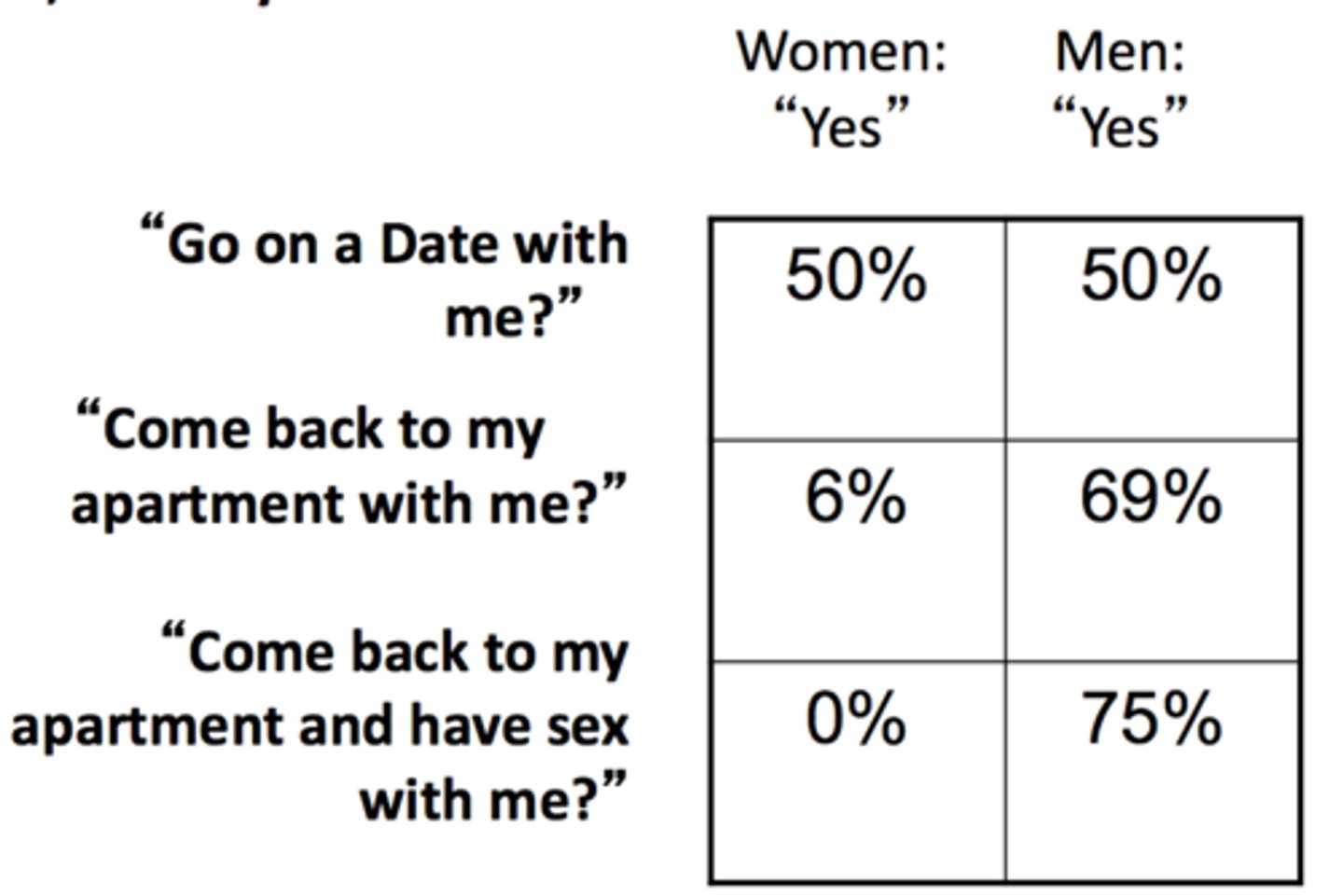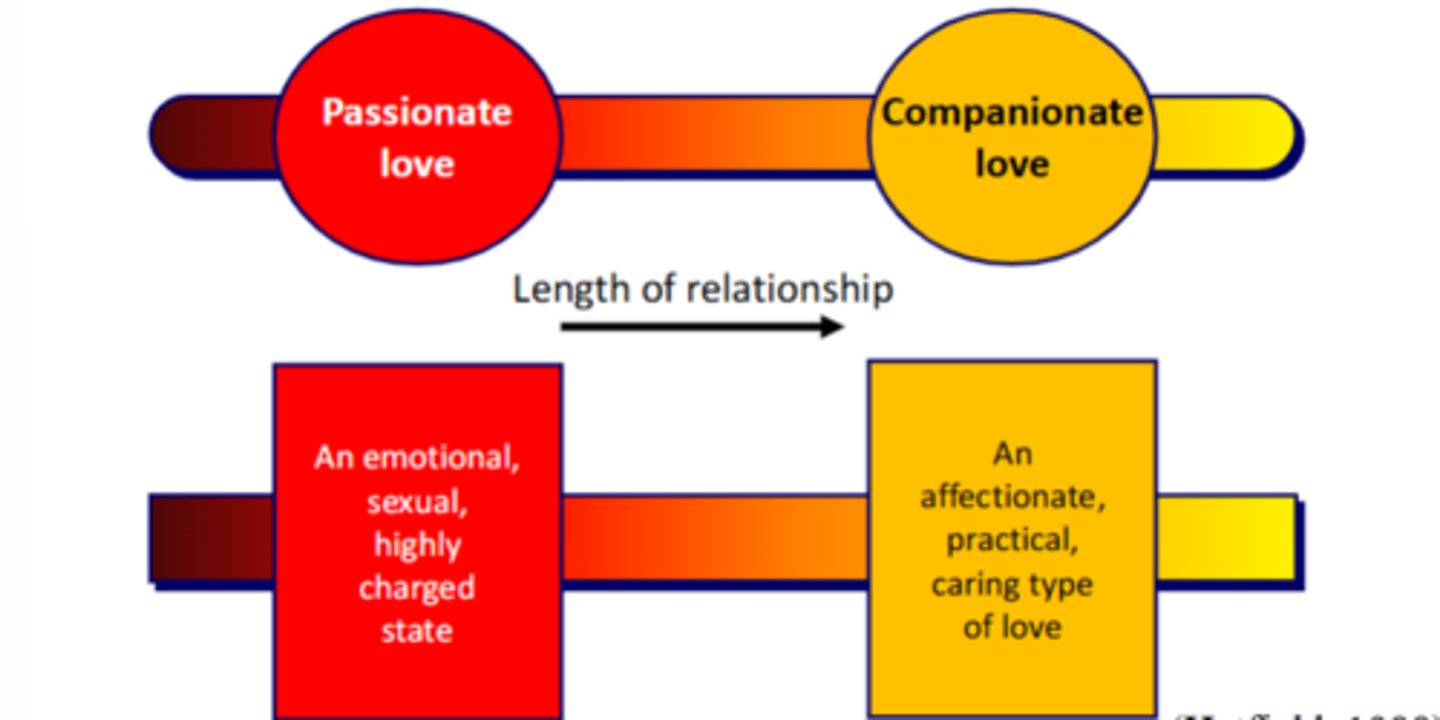persuasion l10 - romance
1/19
There's no tags or description
Looks like no tags are added yet.
Name | Mastery | Learn | Test | Matching | Spaced |
|---|
No study sessions yet.
20 Terms
attractiveness includes
-physical attractiveness
-warmth
-competence
physical attractiveness
•Physically attractive people are liked better (Dion et al., 1972) - assumed to have better traits and better life outcomes.
•Complex effects of being around attractive others (Kernis & Wheeler, 1981) eg difference with friends and strangers
Attractive friends
Friend = assimilation effect.(Their qualities "transfer" to you,so their higher attractiveness becomes your perceived attractiveness.)
stranger attractive
Stranger = contrast effect.(They are compared to you; so their higher attractiveness decreases your attractiveness.)
warmth
•Showing a positive attitude (Folkes & Sears, 1977)
•Liking various things == being liked yourself.
•Smile, be attentive, express emotions (Friedman et al., 1988)
"Being extraverted" - part of a larger pro-extravert bias (Susan Cain, 2016)
competence
•Be socially skilled, intelligent, competent
•Be "less than perfect" - pratfall effect (Aronson, Willerman, & Floyd, 1966)
Pratfall Effect
Aronson et al.
-Pratfall means like mistake
-attractiveness of those who did well on the test increases when make Pratfall
-but opposite for those who did bad
possible reasons for Pitfall effect (might not be needed)
-could view It as people intimidated by "perfect" people
-could be to do with Pitfall bringing more attention (consider S1 vs 2 thinking, deeper thinking about unintelligent bad, intelligent good)
what pop psychology says about dating
• Ongoing claims that men and women's dating strategies and sexual interests differ.
• More contentious than pop psychology might suggest
Classic study men vs women
-sort of study presented to the public
-field study men/women approached by member of opposite sex (all straight) and hit on them
-pre-selected to be attractive
-then asked do you want to go on date / come back to my flat / go to bed (shows flat equals sex)
-men and women had opposite results
-taken as all part of evolutionary theory men interested in quick low stakes sexual opportunity whereas women more protective of it

Method considerations with Clark/Hatfield study
• Participants were straight, so the "men" were also participants approached by women and vice versa. Women approaching so boldly are viewed as intelligent, successful, sexually skilled. (when you ask men whereas men who do this are viewed as creepy, its not equal )
• If you recruit bisexual women, for instance, their responses depend on who approaches - much more likely to go home with a woman vs man. (suggests man and woman doing this not percieved the same)
• Men doing this felt to be "creepy" - but famous target (Brad Pitt) → gender difference gone
-ability of these gender differences to disappear suggests not just to do with evolutionary strategy but also the perception of the asker (confound)
pick up lines preference (table format attempted)
MOST PREFERRED LEAST PREFERRED
General Hi Your place or mine?
Bar Want to dance? Bet I can outdrink you!
Restaurant I haven't been here before. What's good on the menu? I bet the cherry pie isn't assweet as you are
.Supermarket Can I help you to the car with those groceries?
Do you really eat that
pick up lines overall resultts
• Undergraduate women rated the humorous lines more favourably than did undergraduate men.
• Women also rated the sexually loaded lines less favourably than did men (similar to Clark/Hatfield!).
• Perceiver personality also affects these results. Humorous (not overly sexual) "chat- up lines" attract extraverted women specifically
romantic story study
Subjects shown stimulus of a romantic story
-board train sitting opposite each other look across aisle, very quickly marry
-people asked if this sounded like the most intense love event they've ever had
romantic story results
Strong experiences of love were foreign to many young
people surveyed in 1977: only 40% of people agreed
that an intensely romantic love experience (like the
previous slide or other examples - e.g., Romeo and
Juliet) seemed familiar
-very polarising , generally either high or low
-therefore how much these descriptions characterise love of most people experience is less
how people feel when they are in love study
Kanin, Davidson, & Scheck (1970)
presented as % "strong agree" or +
• Boosts to well-being (79%)
• Difficulty concentrating (37%)
• Floating on a cloud (29%)
• Nervous (22%)
• Giddy and carefree (22%)
-each individual element is often minority of people but together shows big effect???
-shows difference between individuals also though
Love also changes over time
have mostly been talking about passionate love so far

Culture can greatly shape romantic
trajectories.
• Love is a prerequisite for marriage more in Western societies and more very recently (Levine et al., 1995)
• Models of love: in arranged-marriage cultures, love seen as growing rather
than a prerequisite to form relationship.
• In 1967, many Americans (65% men, 24% women) would marry someone they weren't in love with, so long as had "right qualities". By 1976, dropped to ~20% each!
-some research has shown that when other people pick may start off with less satisfaction but satisfaction grows whereas in the west more polarizing when pick yourself
-suggests there may know whats better for you eg village matchmaker
Suffocation Model
-Romance was once about economic transaction, survival, childbearing.
-In contemporary societies, more about meeting psychological needs.
-now more about abstract than physical needs (Maslow)
Increasingly challenging to meet needs of modern love-seekers.
Higher needs are more idiosyncratic, abstract.
YET: Less time for mutual need-fulfillment, with most households seeking dual full-time income.
times changing
-times have changed - less people seeking out these long term relationships and having kids
-suffocation trying to explain
-effects of late stage capitalism?
Increased +100%in a period when population only increased +50% (dual-earner couples with at least one child)